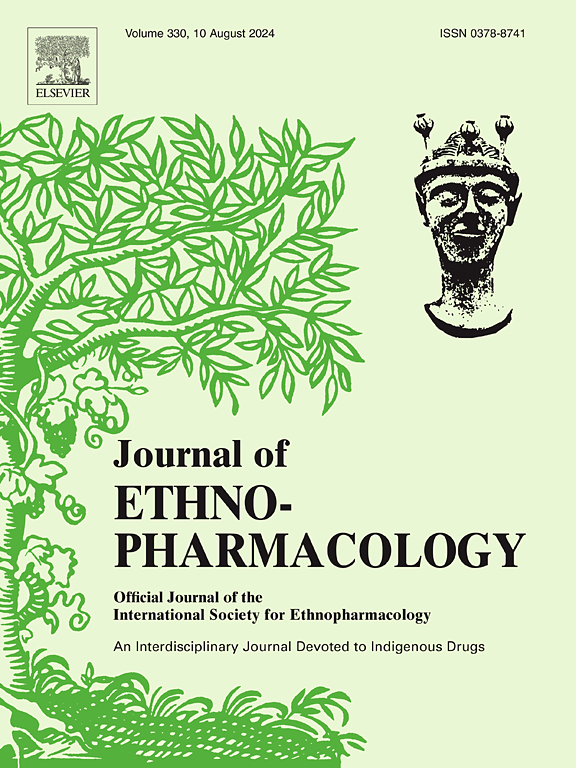Phillyrin from Forsythia suspensa suppresses the proliferation, angiogenesis, and metastasis of colorectal cancer via targeting CD147
IF 4.8
2区 医学
Q1 CHEMISTRY, MEDICINAL
引用次数: 0
Abstract
Ethnopharmacological relevance
Forsythia suspensa (Thunb.) Vahl, a traditional Chinese herbal medicine, is widely used in clinical practice. Phillyrin (PHN), a major bioactive component of Forsythia suspensa, exhibits significant anti-inflammatory, neuroprotective, and antibacterial properties, offering potential for colorectal cancer (CRC) prevention and treatment.
Aim of the study
This study aimed to clarify the effects of PHN on CRC progression, focusing on epithelial-mesenchymal transition (EMT) and angiogenesis, to elucidate the underlying molecular mechanisms involving CD147.
Materials and methods
In vitro, cell viability and colony formation were conducted to detect the inhibition of PHN on CRC cells. Wound healing and Transwell assays were used to detect the migration and invasion. PCR, Western blot and ELISA were performed to clarify the relevant molecular levels. Overexpression plasmids were constructed to regulate the target molecule for mechanism research. In vivo, subcutaneous xenograft and lung metastasis models evaluated PHN's anti-cancer effects including histological and immunohistochemical (IHC) analysis.
Results
PHN inhibited CRC cell proliferation, migration, and invasion in vitro, downregulating CD147 expression, while CD147 overexpression reversed the effects of PHN. In vivo, PHN significantly suppressed tumor growth and lung metastasis, reducing VEGFA, N-Cadherin, Snail1, and MMP-9 expression, and increasing E-Cadherin levels.
Conclusion
These findings indicated that PHN suppressed the proliferation and metastasis of CRC via regulating CD147-mediated EMT and angiogenesis. PHN may be a promising therapeutic agent for CRC treatment in clinic, and CD147 may be a potential target for drug development.

求助全文
约1分钟内获得全文
求助全文
来源期刊

Journal of ethnopharmacology
医学-全科医学与补充医学
CiteScore
10.30
自引率
5.60%
发文量
967
审稿时长
77 days
期刊介绍:
The Journal of Ethnopharmacology is dedicated to the exchange of information and understandings about people''s use of plants, fungi, animals, microorganisms and minerals and their biological and pharmacological effects based on the principles established through international conventions. Early people confronted with illness and disease, discovered a wealth of useful therapeutic agents in the plant and animal kingdoms. The empirical knowledge of these medicinal substances and their toxic potential was passed on by oral tradition and sometimes recorded in herbals and other texts on materia medica. Many valuable drugs of today (e.g., atropine, ephedrine, tubocurarine, digoxin, reserpine) came into use through the study of indigenous remedies. Chemists continue to use plant-derived drugs (e.g., morphine, taxol, physostigmine, quinidine, emetine) as prototypes in their attempts to develop more effective and less toxic medicinals.
 求助内容:
求助内容: 应助结果提醒方式:
应助结果提醒方式:


